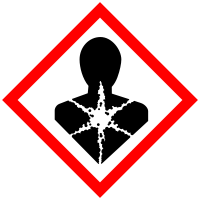
Photo from wikipedia
Long term exposure to polycyclic aromatic hydrocarbons (PAHs) is associated with the increasing risk of lung cancer. To identify differentially hypermethylated genes associated with PAHs-induced carcinogenicity, we performed genome-wide DNA… Click to show full abstract
Long term exposure to polycyclic aromatic hydrocarbons (PAHs) is associated with the increasing risk of lung cancer. To identify differentially hypermethylated genes associated with PAHs-induced carcinogenicity, we performed genome-wide DNA methylation analysis in 20 μM benzo(a)pyrene (BaP)-transformed human bronchial epithelial (HBE) cells at different stages of cell transformation. Several methylated genes (CNGA4, FLT1, GAREM1, SFMBT2, TRIM36) were differentially hypermethylated and their mRNA was suppressed in cells at both pre-transformed and transformed stages. Similar results were observed in HBE cells transformed by 20 μg/mL coke oven emissions (COEs) mixture collected from a coking manufacturing facility. In particular, hypermethylation of TRIM36 and suppression of TRIM36 expression were gradually enhanced over the time of COEs treatment. We developed bisulfite pyrosequencing assay and assessed TRIM36 methylation quantitatively. We found that hypermethylation of TRIM36 and reduced gene expression was prevalent in several types of human cancers. TRIM36 hypermethylation appeared in 90.0% (23/30) of Non-Small Cell Lung Cancer (NSCLCs) tissues compared to their paired adjacent tissues with an average increase of 1.32 fold. Furthermore, an increased methylation rate (5.90% v.s 7.38%) and reduced levels of TRIM36 mRNA were found in peripheral lymphocytes (PBLCs) of 151 COEs-exposed workers. In all subjects, TRIM36 hypermethylation was positively correlated with the level of urinary 1-hydroxypyrene (P < 0.001), an internal exposure marker of PAHs, and the DNA damage (P = 0.013). These findings suggest that aberrant hypermethylation of TRIM36 might be involved in the acquisition of malignant phenotype and could be served as a biomarker for risk assessment of PAHs exposure.
Journal Title: Environmental pollution
Year Published: 2017
Link to full text (if available)
Share on Social Media: Sign Up to like & get
recommendations!